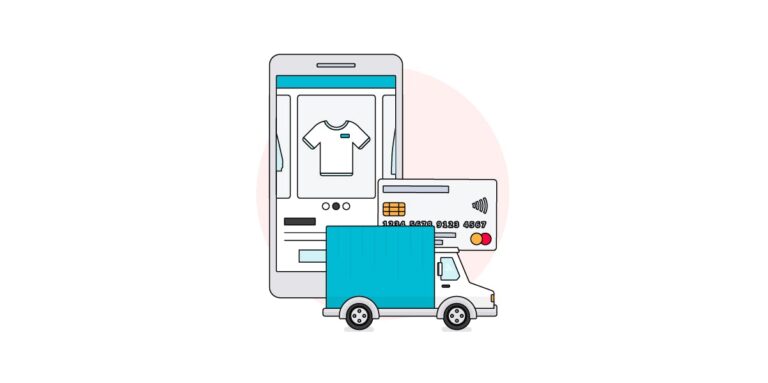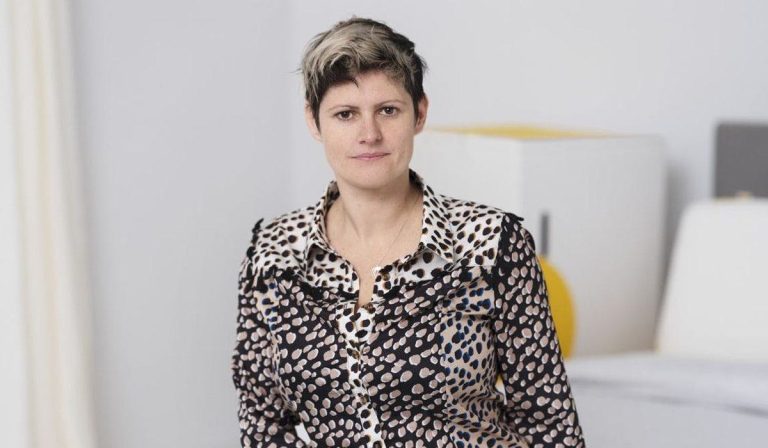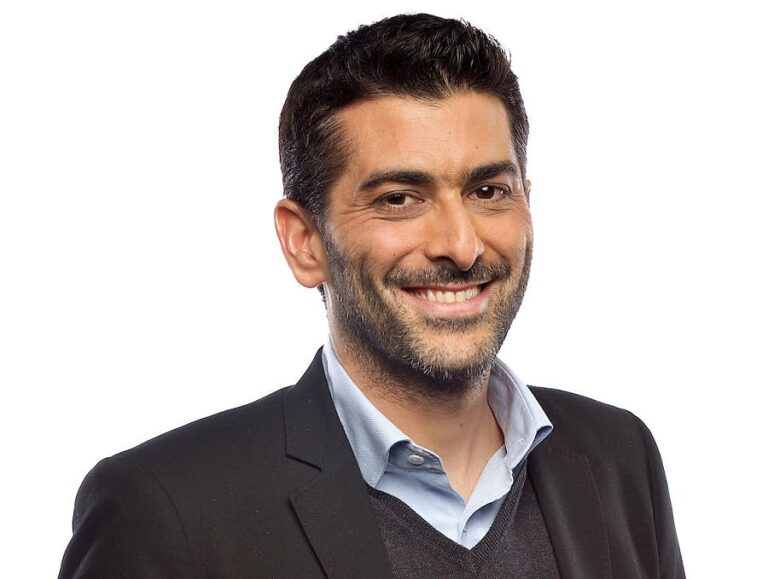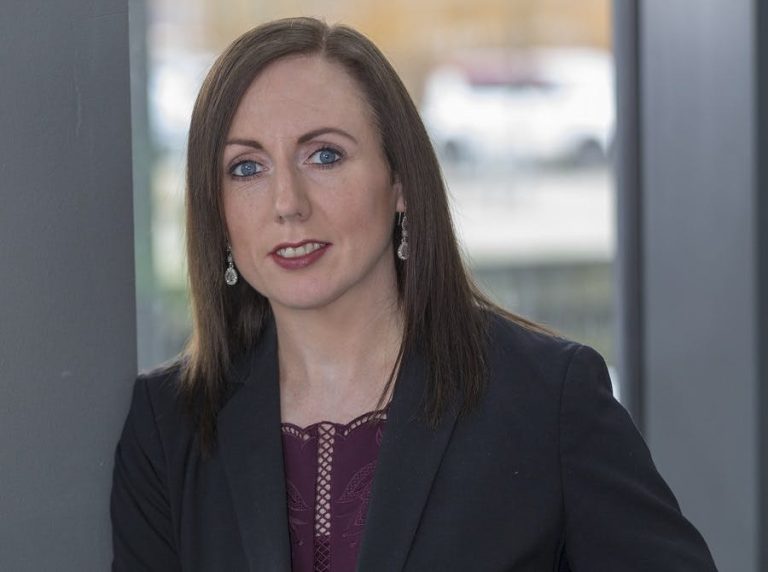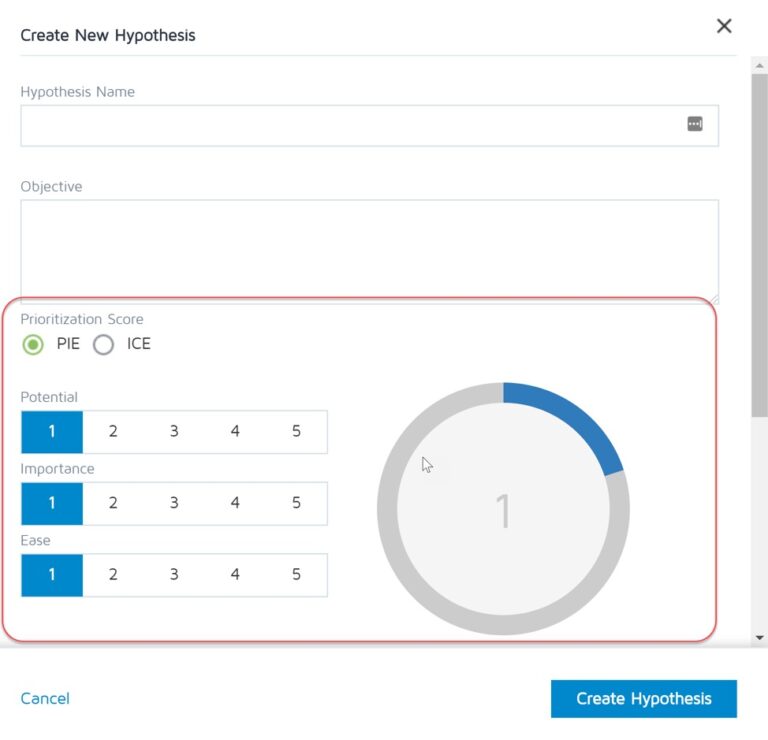The growth of connected TV advertising has been one of the great success stories of 2020, with a number of our experts expecting this trend to continue into 2021. The Trade Desk’s Philippa Snare notes,
Jean-Christophe Conti, CEO at VIOOH, believes that digitalisation and the rise of programmatic in out of home (OOH) advertising will have crucial roles to play in the revival of that channel, which was severely impacted by the pandemic as footfall dropped to a fraction of its usual amount.
Alex Khan, Group MD, International at Unruly, expects that the “surge in the use of connected TV apps and devices due to the pandemic” will continue into 2021, along with the continued growth of video advertising, as marketers have greater access to performance metrics for their campaigns.
- Building resilience and agility
- Digital and programmatic to the fore
- The continued rise of connected TV and video
- New channels to connect with consumers: mobile and DTC
- A catalyst for wider changes
1. Building resilience and agility
Changes in consumer behaviour have been a prevailing theme of 2020 (and subsequently, of these predictions). Alongside the continued growth of channels like connected TV and video, there have been more fundamental shifts in the way that consumers interact with brands, which subsequently change the landscape for marketers and advertisers as they seek out the best opportunities to reach consumers where they are.
Why now is the time to invest in programmatic OOH
Ebay’s Harmony Murphy predicts that there will be a rethink of how brands approach advertising blocklists for potentially sensitive topics, prompted by the coronavirus pandemic. “The global pandemic has highlighted weaknesses within blocklist systems. As Covid-19 reached the UK in spring, advertisers and agencies scrambled to protect brands against ‘Coronavirus’ with blocklists. But, as brands saw their ads blocked from huge swathes of engaged audiences, it became apparent how flawed blocklists can be when used as part of a broad-brush approach.
After a turbulent year that saw almost all predictions for the advertising industry thrown out of the window during the earliest months of the pandemic, we’re turning our sights to 2021 and what lies ahead.
Data trends in 2021: the expert view on cookies
“2020 was the year that programmatic out of home (OOH) was set to go mainstream but as we now know, this year has been anything but normal. Despite a challenging year, our 2020 State of the Nation report predicts continued growth for programmatic OOH in 2021, with 99% of UK executives looking to increase spend in the channel and over a third of these expecting to double it.”
“2. More conversation with clients around how we identify and connect with audiences that help them drive growth. Identity, privacy, trust, subscription culture and cookies will no doubt features in these conversations.
“For the first time, media planners will be armed with data that provides insight into the incremental reach and performance across TV and digital. Coupled with the vast majority (86%) of consumers saying they want to see more video content from brands in 2020 (Wyzowl), brands will up their video content production to meet this demand and we’ll see video ad budgets continue to grow in 2021.
While Conti doesn’t believe that digital or programmatic will be a silver bullet for the channel, he does believe that they will offer important advantages to advertisers dealing with continued uncertainty. “Programmatic helps create confidence for advertisers across all channels due to its flexibility, and perhaps this is especially true for OOH based on the very real possibility of lockdowns. We should anticipate gradual audience growth as we learn to live with Covid-19 in 2021. Announcements of potential vaccines have brought optimism, but it may well take several quarters for their impact to filter through society and industry.
2. Digital and programmatic to the fore
“At the same time, we’ll see a rise in innovative partnership models from larger agencies who can support clients with bespoke tech, consultancy, or training; bolstered by acquisitions of specialist agencies that are struggling to scale on their own in a risk-averse climate.”
Harmony Murphy, GM Advertising at Ebay UK, agrees that marketers need to be prepared for uncertainty. “While planning has always been crucial for brands, the ability to pivot is becoming increasingly important. If there’s one thing we’ve learnt this year it’s to expect the unexpected and, with brands facing lots more uncertainty in the year ahead, they should be prepared to adapt their strategies as necessary.
One concern that was uppermost in many of our commentators’ minds is how advertisers will work to prevent a reoccurrence of 2020. While it’s unlikely that we’ll see the exact scenario that took place at the beginning of 2020 unfolding again in the near future, there are many other unexpected events that could still occur, and advertisers now know precisely how dangerous being unprepared can be.
“While we may have a vaccine, Covid-19 isn’t going anywhere fast, so it’s important that we take proactive action to create the best marketing solutions. In 2021, I hope to see the experiences of the past year serving as a catalyst for change – forcing advertisers to communicate more with their partners up the supply chain.”
We asked a number of ad industry experts about the prevailing trends in digital advertising in 2021. What do they think will happen after such an unprecedented 2020? As you might expect, there was plenty to say; below are some of the key themes and evolutions that our commentators forecast for next year.
“In order to make these budgets work as hard as possible, brands will put pressure on video advertising platforms to provide more creative insights and editing solutions, resulting in digital marketers having greater insight and control over creative strategy, historically a responsibility held by creative agencies.”
“In search, we’ll see Google’s algorithm focusing more strongly on user experience and intent and Amazon continuing to expand its ad offering as ecommerce keeps flourishing. Paid social will offer new opportunities for marketers thanks to improved shopping features across platforms, and is also going to enjoy a boost outside of Facebook with alternative platforms gaining traction internationally.”
The DTC pandemic boom: What can we learn?
“3. Clients’ continued investment to build and scale their own people-based data (and our ability to leverage these in media).
“The lockdowns caused by the pandemic have accelerated the shift towards digital across all areas of our society. To address this, many businesses are reinventing themselves around online trading principles, and media and advertising businesses are no different. In an uncertain and increasingly digital-first world, the need for flexibility and data-driven campaigns has arguably never been greater and will continue to impact the future of out of home. I expect the uptake of digital OOH to gain pace in 2021.
“This year saw many trends that had been gradually evolving significantly accelerate as a result of the onset of Covid-19. One such trend has been the rise of Connected TV (CTV). With most consumers’ day-to-day routines up-ended, the on-demand, flexible nature of CTV led to a huge growth in consumption – Channel 4’s All4 saw its highest number of quarterly views ever across Q1 of this year. And where consumers go, advertisers follow.”
3. The continued rise of connected TV and video
Matt Keating, UK Sales Director at VDX.tv, highlights some of the other benefits that CTV has to offer, such as its ability to connect with younger audiences and its lack of reliance on cookies. However, he cautions that it is still early days for the channel. “Advanced TV (sometimes incorrectly referred to as Connected TV) has become a big topic in 2020 with its ability to reach younger, niche audiences. However, still in its infancy, advertisers and agencies are trying to figure out how to use it in a way that complements marketing objectives and existing channels, while still managing reach and frequency.
“A phrase that would sum up 2020 would be “a year like no other” and for good reason,” says Sanjay Nazerali, Global MD and Chief Strategist at Dentsu X. “Due to the pandemic, the advertising industry took massive budget hits. For the past decade the industry has been focused on driving efficiency, but with this unprecedented year, I suspect we’ll see large investment in building resilience. In 2021 the industry will need to develop capacity, invest in contingency capabilities, and prepare for a more imaginative set of future scenarios to ensure business continuity and success in the face of adversity.”
Despite initial setbacks in the first half of the year as the bottom fell out of advertising spend, digital advertising is making a steady comeback, with some channels – such as mobile advertising – remaining resilient, and others – like out of home – predicted to bounce back. Shifts in consumer behaviour due to the pandemic have likewise made for some interesting trends in terms of which types of advertising are achieving cut-through.
“It’s my belief that programmatic will hold the secret to the OOH industry’s recovery. As we navigate further uncertainty, the flexibility that programmatic techniques and technology offers advertisers, to pause, pivot and optimise campaigns at a moment’s notice will be crucial to its continued adoption and to the overall recovery of the outdoor advertising sector.”
“7. A return to a truer partnership approach between agencies and brands driven out of effectiveness conversations, not efficiency only.”
Daniel Gilbert, CEO at Brainlabs, has some reservations about the immediate future of programmatic due to the ongoing demise of third-party tracking cookies, on which programmatic very much depends; however, he believes that many other digital channels will provide major opportunities for advertisers. “Programmatic as a whole may need some re-evaluating as the cookie starts to crumble, but it will be a breakthrough year for connected TV and digital audio, which is going to grow massively with lots of big tech already investing.
“Even the car buying experience has transitioned to mobile purchases being more and more routine — Tesla led the way for new cars, Carvana is pushing the pre-owned model and dealerships across the country have been adopting frictionless, contactless buying models.”
“4. We will have richer, evidence-based understanding of where to invest the next pound to drive business outcomes. Marketing and Finance will come together more. Predictive modelling will become mainstream.
Alex Khan of Unruly adds, “The COVID-19 pandemic has led to a surge in online consumer spending across all retail sectors, which will continue through 2021. In response, brands are moving away from selling everything via external channels and adopting a direct-to-consumer strategy. […] Consumers will benefit from these direct relationships as brands will be able to offer personalised promotions, which will make this a long-term change in retail habits.”
Looking ahead to 2021, Keating hopes that marketers will become more comfortable relying advanced, or connected, television as an ad channel. “According to FreeWheel, 70% of UK marketers surveyed expect advanced TV ad spend to increase in the next 12 months. As we move into 2021, I hope that advanced TV becomes less of a scary unknown and more of a comfortable entity that is a part of many media plans, particularly for brands outside of large Tier 1 advertisers.
4. New channels to connect with consumers: mobile and DTC
The direct to consumer (DTC) trend has also accelerated exponentially during Covid-19 as brands take advantage of their newly-online audience to sell and market to consumers directly. Brainlabs’ Daniel Gilbert predicts, “We’re going to see a new wave of direct-to-consumer business models as the age of the high street and intermediary agents comes to an end, accelerated by marketing services available to everyone as well as more hybrid agency models.
“Additionally, I expect to see advertising-based video on demand (AVOD) services grow and become a serious source of competition for eyeballs and ad spend, especially with viewers losing tolerance for additional subscription video on demand (SVOD) services, and a few of the big broadcaster video on demand (BVOD) players beginning to open up their supply to programmatic demand sources.”
“While the bravest marketers might be well prepared to pivot, they’ll need to be ready to make mistakes too. After all, new strategies might not always produce the best results first time, so resilience, perseverance and a ‘test and learn’ mentality will be key. Next year, it’s going to be the most agile and in-touch brands that will remain a step ahead. These brands will be the ones that tap into the freshest data to understand ongoing changes in consumer behaviour, readily reassess and pivot their strategies and continually engage consumers with relevant, empathetic messages, whichever way the wind shifts.
“5. We will see truly brave and impactful campaigns that drive relevance with consumers driven from new intelligence out of behavioural datasets. This means we understand more about what makes people tick and how we vary our experiences for them across media and creative.
In addition to shifts in consumer behaviour, Snare links the desire of advertisers to invest in CTV to its adaptiveness as a channel; like programmatic out of home, this has the potential to be a major boon in a still-uncertain climate. “We’ve already seen a shift away from the up-front model of TV ad-buying, and this will only gather pace in the new year. In the current context, nobody can be certain what the next few weeks hold, never mind the next few months – so it’s no wonder advertisers are enjoying the flexibility and speed offered by CTV.”
Because of this, she predicts, “2021 will be the year when programmatic is no longer simply a line item on the media plan, but rather a central part of the planning process and any successful campaign.”
“Across all channels, many marketers have really come to realise the benefits of digital this year,” says Philippa Snare, SVP of EMEA at The Trade Desk. “With ad budgets set to be closely scrutinised into the new year, the power of data-driven advertising to aid growth and gain market share has never been more important.”
13 stats that show how advertising is changing
“6. Fewer silos, more connection – whether this is across channels, between media and creative, or across insight and activations.
“In the course of weeks, we saw shifts in consumer habits that would typically evolve over years, and a swift overhaul of marketing strategies was essential – but easier said than done for many retailers. In 2021 we expect to see brands bounce back by shifting ad budgets to different channels. In particular, more investment will go towards addressability and the digital streams of traditional channels such as connected TV and DOOH, which will almost certainly enjoy a revival by Q2 2021.”
5. A catalyst for wider changes
Isabelle Baas at Starcom also predicts that the pandemic will bring about some wider changes in our approach to advertising, thanks to the way that industry topics like consumer trust, privacy and regulation have become mainstream news, while conversations that normally would have only taken place in digital activation teams have been taken up by the C-suite. In 2021, she foresees seven key changes coming out of this:
“Indeed, while for some, blocking ads against keywords on certain channels will improve brand safety, for others this blanket approach will cause more damage than good – limiting campaign reach and reducing share of voice, for no good reason. The silver lining it that this has given the industry a great opportunity to reassess – and consider the value of taking an approach that’s granular enough to optimise reach, relevance and brand safety across each channel.
“Personally, I think 2020 has been an exciting year with unprecedented change in digital advertising,” says Isabelle Baas, Managing Partner, Digital, Data & Technology at Starcom. “There is no doubt that Covid has accelerated DTC and helped advertisers that were already well set up in digital advertising and data management to capitalise on their foundations.
“The biggest sea-change is the shift to mobile devices becoming the primary method of interaction consumers will have with brands, period,” says Gabriella Stano Aversa, Director of Strategy and Planning at AdColony. “The necessity of curbside pickup and grocery/restaurant delivery has shown consumers just how convenient it can be and many simply won’t go back to in-store shopping or ordering.
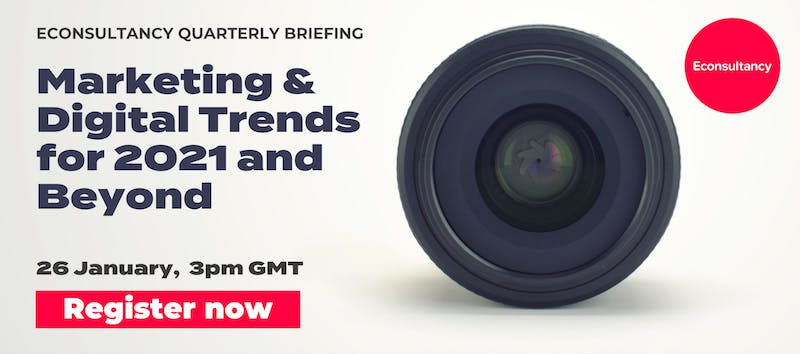
“1. We lose the phrase “digital marketing” and instead use “marketing in a digital world”.
“Many companies were quick to pivot their ways of connecting and transacting with consumers. We’ve seen brands set up their own ecommerce solutions in record time or partner with shopping solutions to fulfil consumer demand. Others who already had ecommerce have witnessed phenomenal direct revenue growth from which to further invest and improve data management.”
“And while the market conditions might be tough, there’s no doubt we’ll see many marketers thriving and adapting amid the adversity.”
He points to the ongoing shift towards prioritising data privacy and clamping down on unethical data practices by businesses as an example of a development that, while not unforeseen, advertisers still need to make sure they are prepared for. “As we move into 2021, we will see increasing internal data privacy frameworks and training in ethical decision-making to prepare for when businesses are handling sensitive information,” he predicts. “Only through the development of resilience to, not just the unexpected, but the expected changes can brands, businesses and society at large succeed in the future.”
“To take advantage of this, brands and advertisers of all stripes should look to reach consumers when they’re already on their mobile devices. It’s a quick jump to the app store (or even a mobile web storefront!) to create an order. Putting a QR code on the screen during an OTT delivered ad simply doesn’t lead to downloads and orders in the same way. Besides, what were consumers doing while they were binging TV this year? Most of them were playing games on their phones.
Paul Frampton, President International at ControlVExposed, echoes Murphy’s predictions about agility being pivotal, adding that it will be necessary in order for brands to adapt to the shifting landscape of digital advertising and capitalise on those channels that are seeing a resurgence. “While media investment overall is still down, there is a clear narrative of resilience and resurgence in digital advertising,” he says. “The brands that are reaping the benefits of this are the ones agile enough to transform in line with changing public preferences.
“A positive aspect of advanced TV is that it has never been a cookie-driven environment, though the challenge then is integrating it with other parts of a media plan, including applying the right kind of targeting to reach incremental audiences and delivering creative solutions that exploit its position as a hybrid of TV and digital.”

